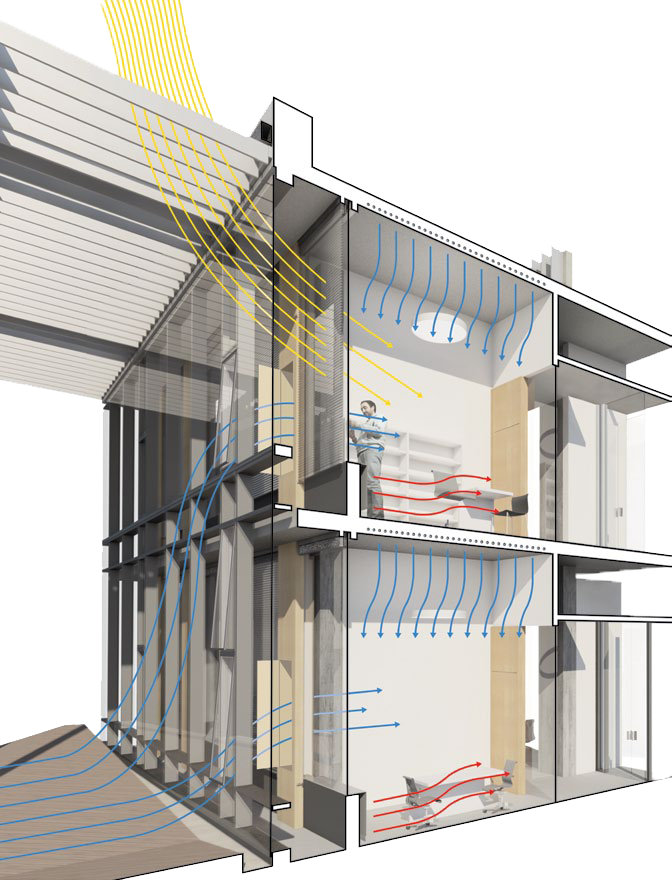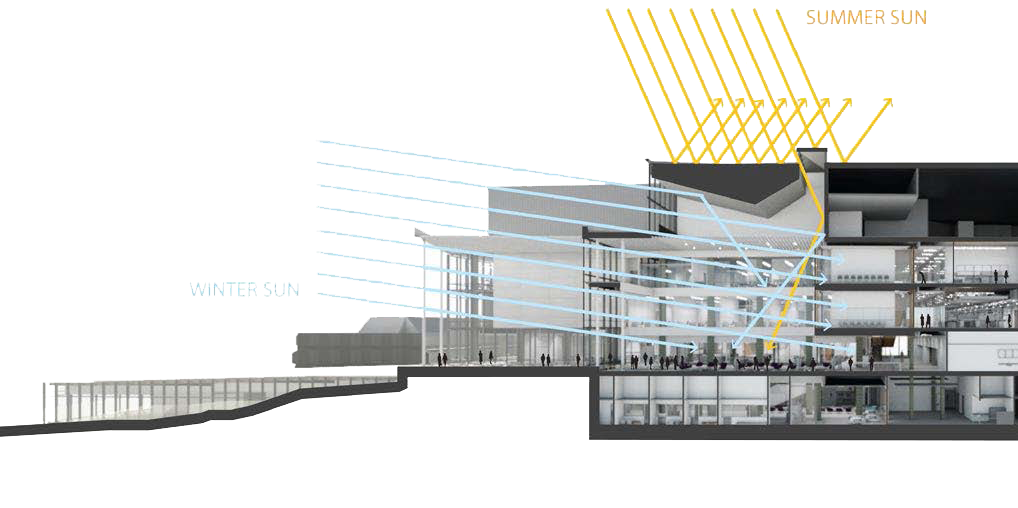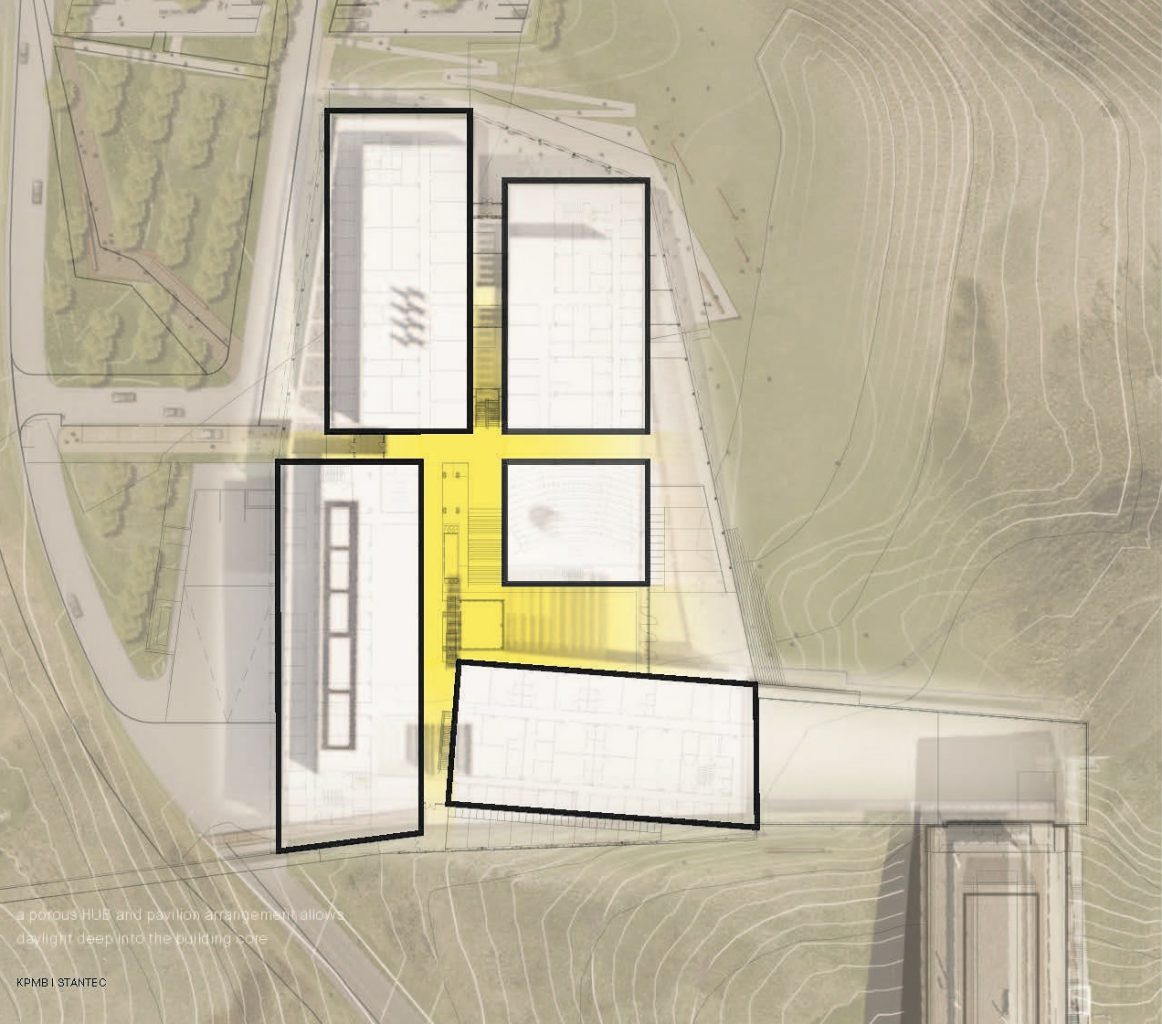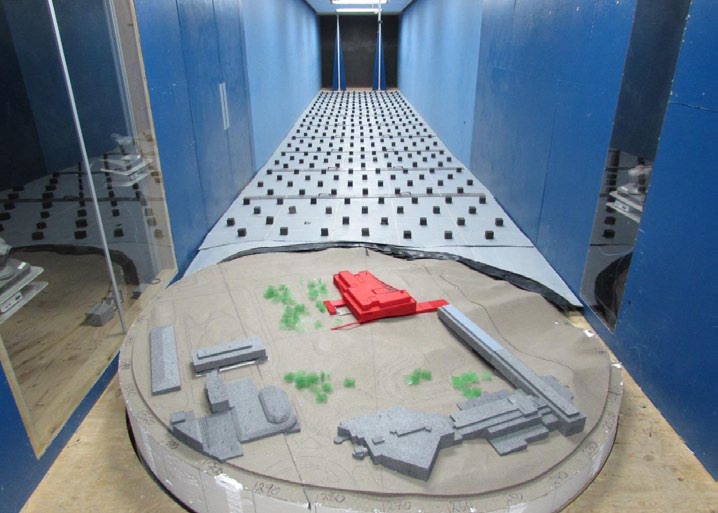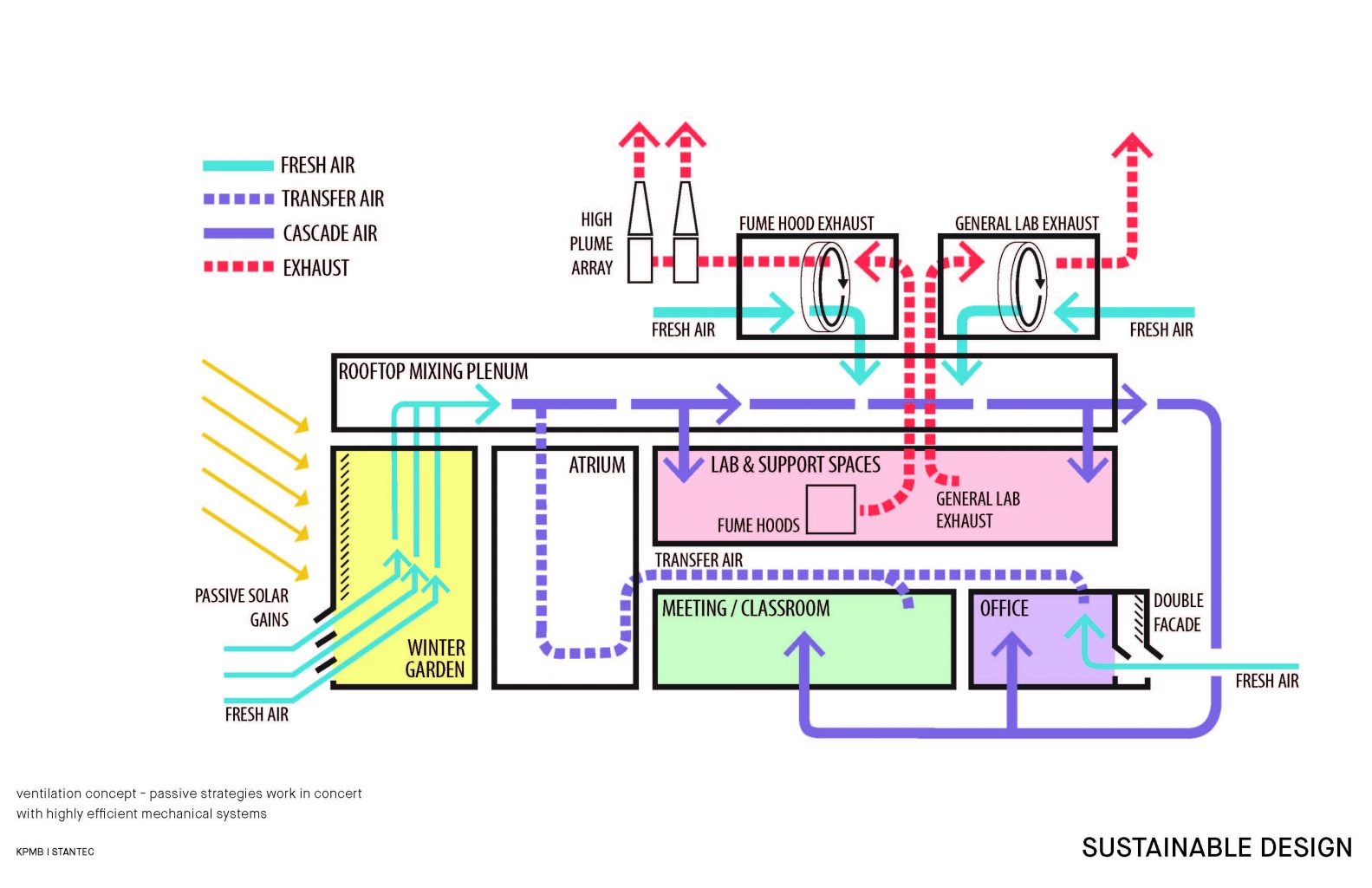The Science Commons is designed with an innovative double façade system. Air enters the building through exterior windows that are controlled by the Building Management System. The percentage of windows open is altered to suit exposure, time of day, wind speed/direction, and interior temperature/humidity. Radiant Heating/Cooling is integrated into the concrete floor slabs and perimeter radiators further condition the air to provide a comfortable office environment.
Based on the local weather data, natural ventilation is possible at least 50 per cent of the time with some preconditioning through the building’s natural ventilation instruments. Interior Blinds and user operable windows into the double façade can be controlled by the occupants to tailor their individual environmental requirements.
By adopting such green measures, the building will be 40% more energy efficient than any science facility of its kind.

